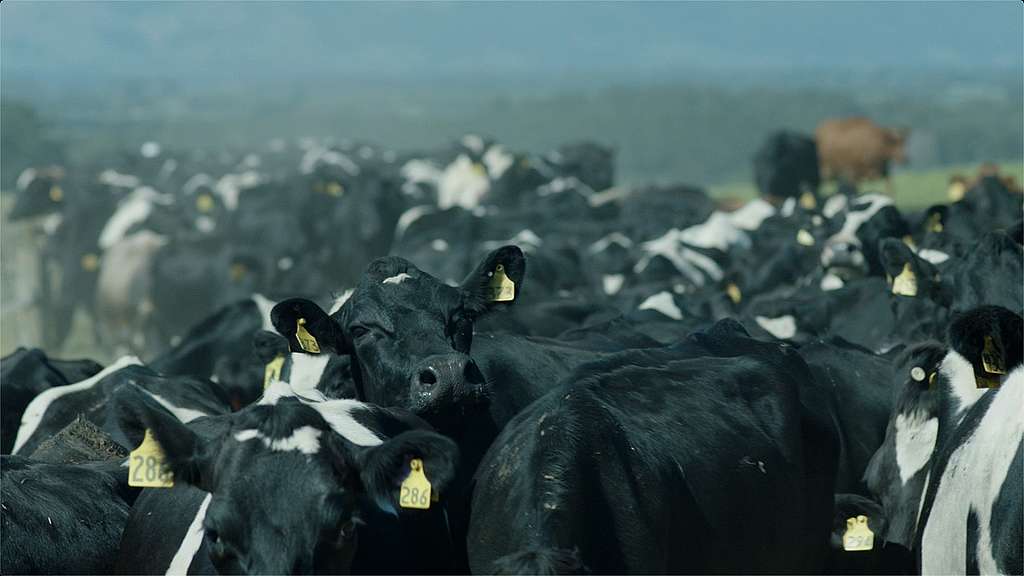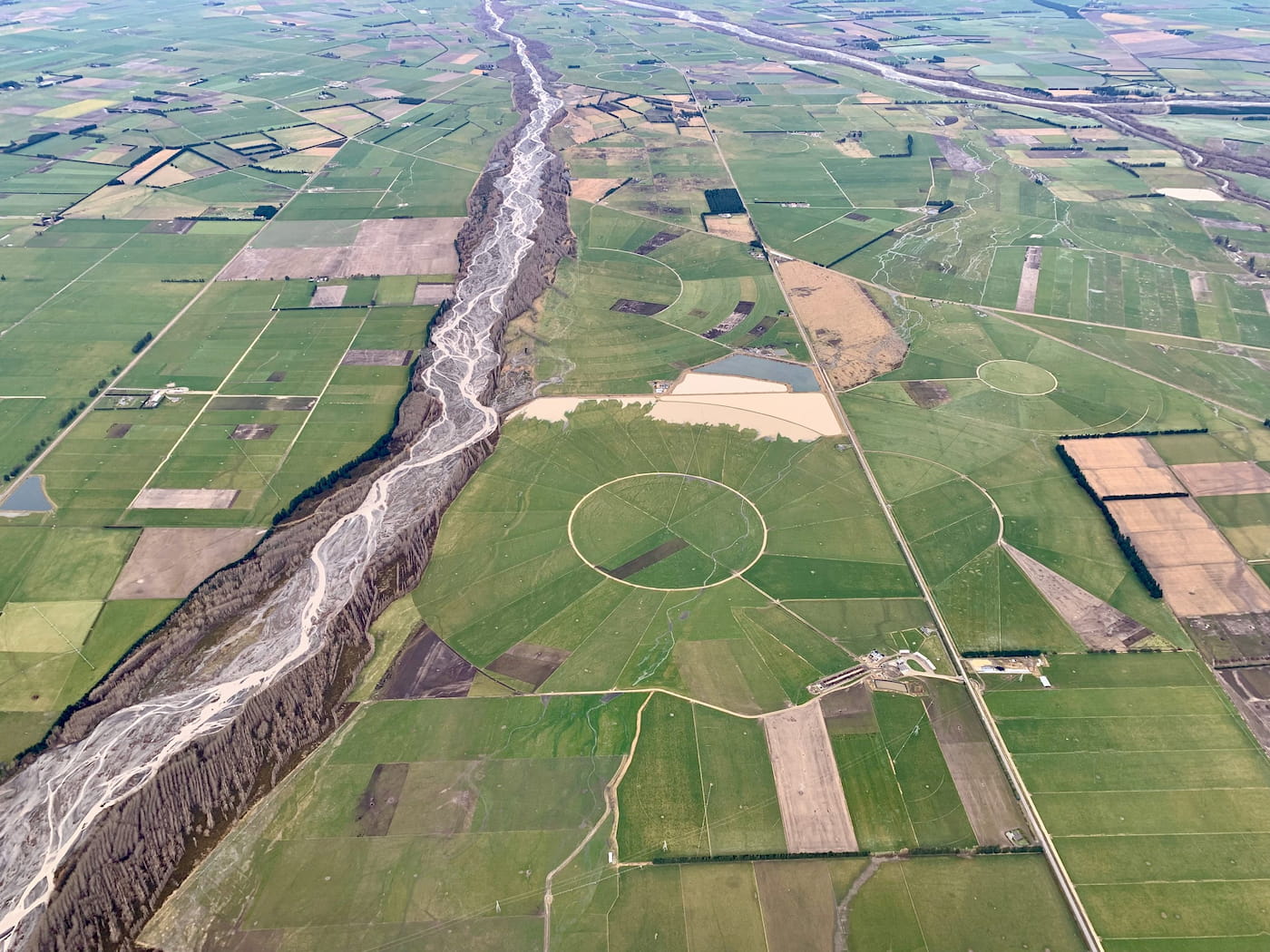Safe and healthy drinking water is a basic human right, and no one should fear their water is unsafe to drink. But that’s the reality for many people in rural New Zealand, particularly in intensive dairying areas with soils like those in Canterbury and Southland that have seen the most rapid recent increases in both synthetic nitrogen fertiliser (urea) use and cow numbers, leading to elevated nitrate contamination in drinking water.
Intensive dairy causes nitrate contamination of drinking water because dairy cow urine is the largest source of nitrate leachate. After that, it’s beef cattle, then synthetic nitrogen fertiliser as a direct source. Between 1990 and 2019 the number of dairy cows almost doubled in New Zealand. In Canterbury the dairy herd increased 10-fold, and in Southland it increased 16 times. The amount of synthetic nitrogen fertiliser used in NZ increased almost 700% over the same period. The nitrogen fertiliser goes onto the grass. Most of the nitrogen ingested by the cows passes through them and comes out in concentrated urine patches that seep into the soil where it converts into nitrate. From there, it gets into aquifers that are the source of drinking water for people near and far.
Nitrate-contaminated drinking water is an emerging health risk, which is why Greenpeace has carried out town hall based nitrate water testing and offered a free mail-in water testing service over the last two years. In April this year, we continued this work on the ground in rural communities. Members of the Greenpeace Aotearoa team, supported by volunteers, held free drop-in events for locals in the South Island to have their bore water tested.
Over the three days of water testing in Lumsden, Gore and Ashburton, we met many farmers, lifestyle block owners and other residents who brought in over 200 water samples. They shared stories of the conversion of sheep and beef farms and fields growing grain into intensive dairy and the pollution that came with it. They told us how they’d seen the chopping down of shelterbelts, the rivers sucked dry by irrigation and turned into algae by eutrophication. They told us how they used to be able to swim in those rivers, but now they’re not safe even for dogs.
We had one dairy farmer with young children who brought in his bore water with nitrate readings almost double the New Zealand Maximum Allowable Value (MAV). His water had 21.5mg/L of nitrate-nitrogen compared with the 11.3mg/L MAV. He said the Government should set a limit on cow numbers. Another dairy farmer told us that imported palm kernel expeller used as supplementary cow feed and synthetic nitrogen fertiliser driving intensification and pollution should be banned.
Nitrate water standards are hopelessly out of date
The New Zealand MAV of 11.3mg/L nitrate in drinking water was set in the 1950s to address only one health condition – Blue Baby Syndrome. That standard is, according to Health Professor Michael Baker “hopelessly out of date”. More recently, emerging evidence from substantive studies around the world(1) has shown that nitrate above 1mg/L in drinking water may increase the risk of bowel cancer and that with every additional milligram, those risks further increase(2). Above 5mg/L, risks of preterm and underweight birth also increase(3).
The World Health Organisation’s International Agency for Research on Cancer (IARC) assessment of studies up to the year 2006 reported that “ingested nitrate or nitrite under conditions that result in endogenous nitrosation is probably carcinogenic to humans.”(4)
In the past year the French Agency for Food, Environmental and Occupational Health & Safety (ANSES) has made a strong statement on nitrate contamination risks. It concluded in its most recent review of evidence:
“ANSES has analysed the scientific cancer studies that have been published since the reference work of the European Food Safety Authority (EFSA, 2017) and the International Agency for Research on Cancer (IARC, 2018). It confirms that there is an association between the risk of colorectal cancer and exposure to nitrites and/or nitrates, whether they are ingested via the consumption of processed meat or drinking water. The higher the exposure to these compounds, the greater the risk of colorectal cancer in the population.”
New Zealand has among the highest bowel cancer rates in the world, and in Southland, the community is having to fundraise for a new dedicated bowel cancer hospital. It’s no wonder the increased risks of nitrate contamination makes people concerned.
Our April water testing in Ashburton showed 11% of samples over the nitrate standard, including one at a whopping 25.7mg/L. 30% of samples were above the preterm birth risk level of 5mg/L, and 77% were above the 1mg/L increased cancer risk level.
Intensive dairy farmers are clearly caught in a system that traps them in debt and exposes them to increased risks of bowel cancer and other human health risks at the same time. That system also pollutes the rivers they used to swim in and destabilises the climate we all depend on.
The concerns of those rural people are real. It was really touching to spend time with men and women who live on the land, and raise their families in these areas, who used to swim in the rivers, and want to rely on safe water to drink. It was clear from the conversations we had that we didn’t farm with this high input, high output, industrial model in the past, and we can’t – and won’t be farming like this in the future.
Because too many cows and synthetic nitrogen fertiliser are the causes and drivers of this triple whammy of public health risks, environmental destruction and climate instability, and rural people – and the rest of us, can’t depend on the industry to face up to the facts, avert the public health, biodiversity and climate crisis, we need the Government to act. The Government must phase out synthetic nitrogen fertiliser and lower the dairy herd and support a transition to more low emissions, regenerative organic and plant-based agriculture for the flourishing environment, safe drinking water and stable climate we all deserve.

Sign on now to call on the New Zealand Govt to ban chemical nitrogen fertiliser.
Take ActionNotes
1 Schullehner, J., Hansen, B., Thygesen, M., Pedersen, C. B., & Sigsgaard, T. (2018). Nitrate in drinking water and colorectal cancer risk: A nationwide population‐based cohort study. International journal of cancer, 143(1), 73-79.
2. Temkin A, Evans S, Manidis T, Campbell C, Naidenko OV. Exposure-based assessment and economic valuation of adverse birth outcomes and cancer risk due to nitrate in United States drinking water. Environ Res. 2019 Sep.
3. Sherris, A. R., Baiocchi, M., Fendorf, S., Luby, S. P., Yang, W., & Shaw, G. M. (2021). Nitrate in drinking water during pregnancy and spontaneous preterm birth: A retrospective within-mother analysis in California. Environmental health perspectives, 129(5), 057001.
4. International Agency for Research on Cancer. Ingested nitrate and nitrite, and cyanobacterial peptide toxins. Lyon (FRA) 2010. Accessed 8 May 2023.
5. ANSES (French Agency for Food, Environmental and Occupational Health & Safety), Reducing dietary exposure to nitrites and nitrates, 12 July 2022,



